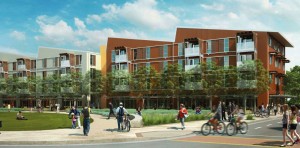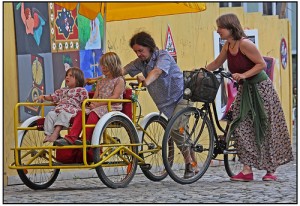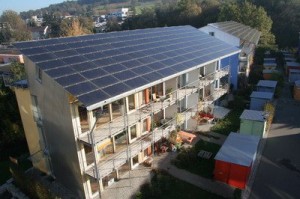 A combined 2.4 megawatts in arrays of high-performance SolarWorld solar panels cover the roof of five important buildings at the historic U.S. Navy base at Pearl Harbor, now known as Joint Base Pearl Harbor-Hickam, on the Hawaiian island of Oahu. The $15 million project, funded under the American Recovery and Reinvestment Act, comprises an important stride in the U.S. military’s intensive base improvements to increase its energy independence using a renewable energy technology that requires no fuel, parts, maintenance, emissions or noise. The largest U.S. solar technology manufacturer for more than 35 years, SolarWorld supplied the solar panels from its factories in Hillsboro, Ore., and Camarillo, Calif., the latter of which has produced crystalline silicon photovoltaic technology since the late 1970s.
A combined 2.4 megawatts in arrays of high-performance SolarWorld solar panels cover the roof of five important buildings at the historic U.S. Navy base at Pearl Harbor, now known as Joint Base Pearl Harbor-Hickam, on the Hawaiian island of Oahu. The $15 million project, funded under the American Recovery and Reinvestment Act, comprises an important stride in the U.S. military’s intensive base improvements to increase its energy independence using a renewable energy technology that requires no fuel, parts, maintenance, emissions or noise. The largest U.S. solar technology manufacturer for more than 35 years, SolarWorld supplied the solar panels from its factories in Hillsboro, Ore., and Camarillo, Calif., the latter of which has produced crystalline silicon photovoltaic technology since the late 1970s.
The solar systems, engineered, procured and installed by California-based DRI Energy under a contract with Hawaii-based Niking Corp., crown five buildings: Combined, the arrays are expected to produce 3.4 gigawatt-hours of electricity annually, enough to power about 440 homes. Installation of the solar panels is complete, but final configuration of associated electrical systems as well as the systems’ commissioning are not expected until this coming fall.
Kevin Kilkelly, president of SolarWorld Americas, said the projects are a source of pride for the more than 1,300 U.S. manufacturing, sales and other employees of SolarWorld.“It’s gratifying for them to know that the high-quality products they have labored so long to perfect and produce now help power one of the best-known U.S. historical and military sites,” Kilkelly said. “In that light, these projects may be the best signs yet of the nation’s embrace of domestic solar technology.”
DRIVE ELECTRIC VEHICLES











